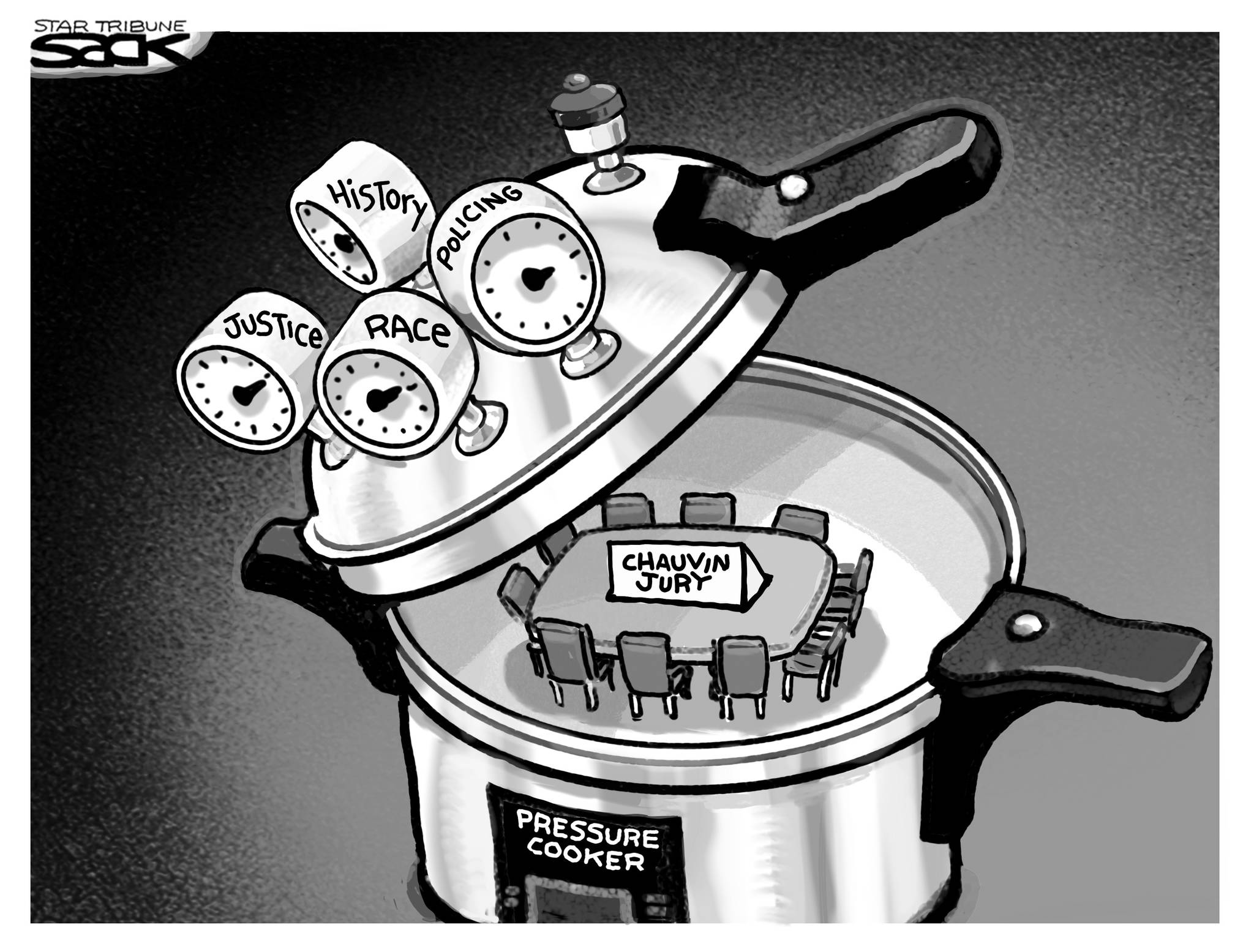By David Zurawik
The Baltimore Sun
I have seen so much American violence, ugliness and death on video as part of this job that I am not easily overcome emotionally anymore by anything I see on the screen. But the video of the death of George Floyd shown during the first week of the trial of former Minneapolis police officer Derek Chauvin shook my soul and made me weep.
The citizen video shot last May by a then 17-year-old girl is shocking, frightening and emotionally overwhelming in and of itself. The images and audio of Floyd’s death as he begged for his life and called for his mother while pinned facedown on the concrete under the knee of Chauvin sent thousands into the streets in America and around the world last summer protesting the coldblooded brutality of Chauvin and three of his colleagues.
But in the trial’s opening week, the prosecution found a way to make that original video shot by Darnella Frazier, who is now 18, even more powerful and disturbing. The attorneys, clearly understanding the power of images to arouse visceral emotions, showed the video to the courtroom and the world and then brought the young woman to the stand to talk about what she saw and felt. Her words were just as powerful as the video. Taken together, the images and words struck so deep into my heart that I can still feel the ache.
Frazier described walking with her 9-year-old cousin to a local food store, Cup Foods, where she saw a scene taking place in the street out front that involved “a man on the ground and … a cop kneeling down on him.”
When asked why she sent her cousin into the store, she said she didn’t want the child to see “a man terrified, scared, begging for his life.”
As she explained it to the court, “It wasn’t right. He was suffering. He was in pain.”
She spoke of her connection to the victim, saying, “When I look at George Floyd, I look at my dad. I look at my brothers. I look at my cousins, my uncles, because they are all Black. I have a Black father, I have a Black brother, I have Black friends, and I look at that and I look at how that could have been one of them,” she said.
She also spoke of the guilt and trauma that remains: “It’s been nights, I’ve stayed up apologizing and apologizing to George Floyd for not doing more, and not physically interacting and not saving his life.”
Listening to Frazier, I came to understand how some police officers historically have tried to terrify Black citizens into submission with scenarios of brutality like the one in Minneapolis that killed George Floyd. And it has been going on for generations, with small children seeing it in their neighborhoods and absorbing the trauma and the fear for the rest of their lives. Frazier seemed to understand that in trying to keep her cousin from seeing this horrible police dance of dominance and death that sadly continues today.
During the first three days of trial, the prosecution successfully married video images and witness testimony again and again. They showed video from police bodycams and other citizen smartphones and then brought some of those who witnessed the death of Floyd on the street to testify. And several of them broke down in tears as they recounted what they saw and, in some cases, the guilt they felt for not being able to help Floyd. Charles McMillian, a neighborhood elder, and Donald Williams, a mixed martial arts fighter, were two of the most powerful witnesses.
The interface of their humanity, empathy, decency and fundamental sense of right and wrong with the depravity of the police officers who participated in or stood idly by while Floyd was tortured and killed on the street is impossible not to feel deep in whatever it is we call a conscience in these dishonest, coldblooded, still-racist, American times.
David Zurawik is The Baltimore Sun’s media critic. Email: david.zurawik@baltsun.com; Twitter: @davidzurawik.



